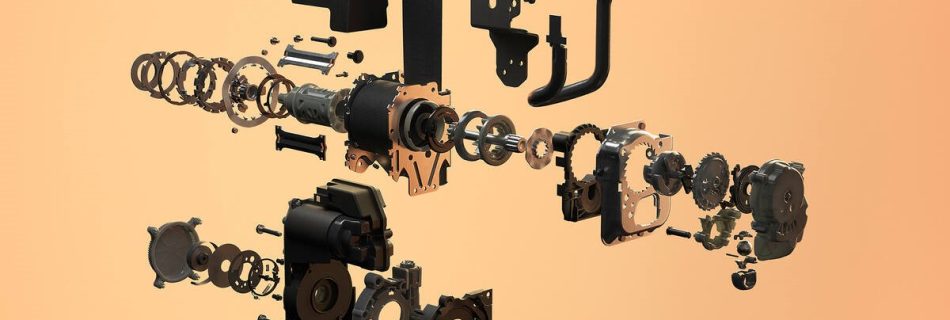BYD Debuts at 2025 Japan Mobility Show with Global Launch of First K-EV
BYD Debuts at 2025 Japan Mobility Show with Global Launch of First K-EV Global debut of BYD RACCO, the brand’s first all-electric K-EV designed exclusively for the Japanese market。 BYD launches dual “EV + PHEV” strategy, introducing its first plug-in hybrid for the Japanese market — the BYD SEALION 6 DM-i. Expanded “ONE BYD” presence with both passenger and commercial vehicle lineups, reinforcing BYD’s long-term commitment to Japan’s new energy transition. Tokyo, Japan – October 29, 2025 — BYD, the world’s leading manufacturer of new energy vehicles (NEVs), made its debut at the Japan Mobility Show 2025, unveiling the BYD RACCO, a lightweight all-electric K-EV designed specifically for the Japanese market, and launched its dual “EV + PHEV” strategy with the introduction of its first plug-in hybrid model for the Japanese market, BYD SEALION 6 DM-i. Under the theme “ONE BYD”, BYD showcased both passenger and commercial vehicles, marking an important step toward building a comprehensive lineup that integrates hybrid and pure-electric technologies for Japan. This milestone further expands BYD’s presence in the Japanese market, enhancing its brand strength and advancing a complete ecosystem for both passenger and commercial mobility. BYD’s passenger vehicle booth featured the all-new BYD RACCO and BYD SEALION 6 DM-i, alongside the upgraded BYD ATTO 3, BYD DOLPHIN, BYD SEAL, and the YANGWANG U9 supercar from BYD’s premium brand. The diverse display demonstrated BYD’s comprehensive product portfolio and commitment to offering Japanese customers innovative, sustainable mobility choices. Since entering the Japanese passenger vehicle market in July 2022, BYD has introduced several successful models, including the BYD ATTO 3, BYD DOLPHIN, BYD SEAL, and BYD SEALION 7. With the addition of the BYD RACCO and BYD SEALION 6 DM-i, BYD continues to strengthen its product lineup, aiming to launch seven to eight electric and hybrid models by 2027. To date, the BYD has established 66 retail outlets across Japan, steadily expanding its sales and service network. On the commercial vehicle front, BYD made the global debut of the BYD T35 all-electric truck and the J6 Living Car Concept, while also displaying the J7 medium-sized and K8 large electric buses. The BYD T35, developed in accordance with Japanese regulations and vehicle dimensions, is equipped with BYD’s signature Blade Battery, ensuring reliable performance and practicality. The model is expected to enter the Japanese market in 2026. Since entering Japan’s new energy commercial vehicle market in 2015, BYD has achieved cumulative sales of approximately 500 electric buses, including the J6, J7, and K8 models, becoming the market leader in Japan’s electric bus segment. BYD’s pure-electric buses operate across the country, from Hokkaido to Okinawa, contributing to cleaner, more efficient public transportation systems. “This year marks the 20th anniversary of BYD in Japan and the first time our passenger and commercial vehicles are showcased together. From electric buses to electric cars and now our Super Hybrid DM-i models — BYD SEALION 6 DM-i and the world premiere of the K-EV — BYD has always aimed to offer safe, efficient, and high-quality new energy vehicles suited to Japan’s needs. We will keep strengthening our services, expanding our lineup, and working with Japanese customers toward a more sustainable future.” said Liu Xueliang, General Manager of BYD Asia-Pacific Auto Sales Division. Beyond Japan, BYD’s Asia-Pacific business covers more than 20 countries and regions across Asia and the Pacific Rim, spanning commercial vehicles, passenger cars, forklifts, and rail transit systems. From early leadership in commercial EVs to expanding its passenger car lineup, BYD continues to align closely with local customer demands and industry trends. With the introduction of the BYD RACCO K-EV, the extension into both electric and hybrid product lines, and the addition of customized electric trucks, BYD is actively contributing to the evolution of Japan’s new energy vehicle ecosystem. As its retail network and product portfolio continue to grow, BYD remains dedicated to localized innovation, supporting Japan’s sustainable mobility transformation and creating greater value for society. About BYD BYD is a multinational high-tech company devoted to leveraging technological innovations for a better life. Founded in 1995 as a rechargeable battery maker, BYD now boasts a diverse business scope covering automobiles, rail transit, new energy, and electronics, with over 30 industrial parks worldwide. From energy generation and storage to its applications, BYD is dedicated to providing zero-emission energy solutions that reduce global reliance on fossil fuels. Its new energy vehicle footprint now covers 6 continents, over 110 countries and regions. Listed in both Hong Kong and Shenzhen Stock Exchanges, the company is known to be a Fortune Global 500 enterprise that furnishes innovations in pursuit of a greener world. For more information, please visit www.bydglobal.com. About BYD Auto Founded in 2003, BYD Auto is the automotive subsidiary of BYD, a multinational high-tech company devoted to leveraging technological innovations for a better life. Aiming to accelerate the green transition of the global transportation sector, BYD Auto focuses on developing pure electric and plug-in hybrid vehicles. The company has mastered the core technologies of the entire industrial chain of new energy vehicles, such as batteries, electric motors, and electronic controllers. It has witnessed in recent years significant technological advancements, including the Blade Battery, DM-i Super Hybrid Technology, e-Platform 3.0 Evo, CTB Technology, e⁴ Platform, DiSus Intelligent Body Control System, DMO Super Hybrid Off-road Platform, and Super e-Platform. The company is the world’s first carmaker to stop the production of fossil-fueled vehicles on the EV shift and has remained top of new energy passenger vehicle sales in China for 10 years in a row. For more information, please visit www.byd.com.



